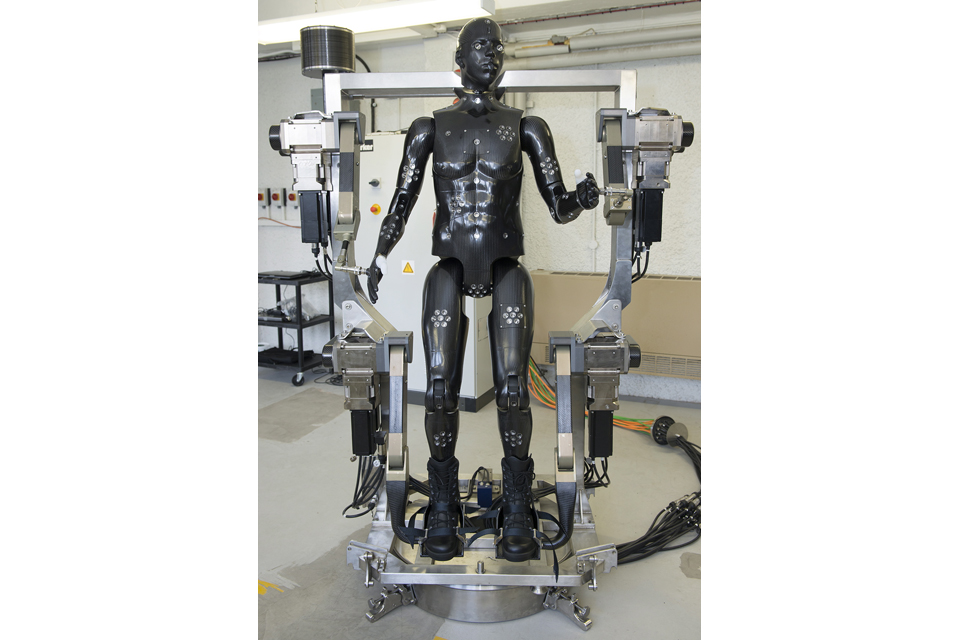Paris, le 7 avril 2014 Sagem (Safran)
Sagem (Safran) a signé avec le laboratoire Percro (Perceptual Robotics Laboratory) de l’école supérieure Sainte-Anne de Pise (Italie) un accord de coopération portant sur le développement des technologies de l’exosquelette.
Un exosquelette est une structure électromécanique autonome externe à l’organisme permettant de démultiplier les capacités physiques de l’être humain, pour le port de charges, la mobilité, et la précision. Le concept d’exosquelette bénéficie aujourd’hui des nouvelles ruptures technologiques, dans les domaines du traitement numérique, des senseurs miniatures et du contrôle.
Au titre de cette coopération, Sagem travaillera sur l’évaluation physiologique et biomécanique et l’école supérieure Sainte-Anne de Pise sur le contrôle, la mécanique appliquée et la mécatronique. Ce partenariat débouchera sur le développement et la fabrication de prototypes pour essais d’ici à 2017.
Ces développements pourront profiter de l’expertise reconnue de Sagem dans la gestion autonome de l’énergie et les technologies de contrôle et de stabilisation de plates-formes.
Le projet s’appuiera à la fois sur des financements européens du programme de recherche et d’innovation Horizon 2020 (1)> et des investissements financés par Safran.
Les technologies d’exosquelette offrent des perspectives considérables dans les secteurs civils et les forces armées, telles que la construction ou la conduite des premiers secours lors de catastrophes naturelles. Les exo prothèses se présentent comme des solutions améliorant l’autonomie des personnes handicapées ou à mobilité réduite, notamment les seniors dans leur quotidien. Ils ouvrent aussi des perspectives pour la robotique collaborative en industrie, ainsi qu’en logistique (augmentation des capacités de manutention, sécurité, lutte contre les troubles musculo-squelettiques, etc.).
Les projets européens associés à ces technologies sont pour Safran, à travers sa filiale Sagem, une opportunité nouvelle de coopération avec l’Italie en matière de recherche et de développement. Faisant un large appel à des technologies innovantes, cette opportunité s’inscrit pleinement dans la stratégie de Safran de s’engager pleinement dans des coopérations européennes (A400M, NH90, etc,) susceptibles à leur tour d’associer des PME innovantes.
(1) Horizon 2020 est le programme de recherche et d’innovation de l’Union européenne. Il recentre ses financements sur trois priorités : l’excellence scientifique, la primauté industrielle, les défis sociétaux. Il est doté de 79 milliards d’euros (en euros courants, Euratom compris), pour la période de 2014-2020. Entrée en vigueur : 1er janvier 2014.
Le laboratoire PERCO Perceptual Robotics Laboratory est l’un des centres les plus avancé dans le domaine de la robotique, de l’intelligence artificielle et de la réalité virtuelle. Fondé en 1994 par Massimo Bergamasco, professeur de mécanique appliquée de l’Université de Saint Anne de Pise. Le laboratoire a deux implantations, l’une à Pise, l’autre à Polo Sant’Anna Valdera de Pontedera.
Sagem, société de haute technologie de Safran, est un leader mondial de solutions et de services en optronique, avionique, électronique et logiciels critiques, pour les marchés civils et de défense. N°1 européen et n°3 mondial des systèmes de navigation inertielle pour les applications aéronautiques, marines et terrestres, Sagem est également n°1 mondial des commandes de vol pour hélicoptères et n°1 européen des systèmes optroniques et des systèmes de drones tactiques. Présents sur tous les continents via le réseau international du groupe Safran, Sagem et ses filiales emploient 7 500 personnes en Europe, en Asie du Sud-est et Amérique du Nord. Sagem est le nom commercial de la société Sagem Défense Sécurité.
Pour plus d’informations : www.sagem-ds.com
commenter cet article …
































